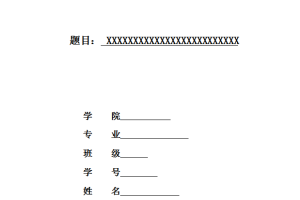旋翼风摆控制系统设计
摘要:本文论述了旋翼风摆系统的工作原理和设计思路。系统采用STM32F103VCT6型号单片机作为整个系统的控制中心,与万向节、摆杆、直流风机(有刷电机+扇叶)、激光头、反馈装置一起构成摆杆运动状态与风机速度分配的双闭环调速系统。通过控制算法进行数据处理,单片机输出可变的PWM波给电机驱动器,控制4个方向上风机的风速,从而产生大小不同的力。使风机及时矫正,防止脱离运动轨迹。控制方式采用PID算法,比例环节进行快速响应,积分环节实现无静差,微分环节减小超调,加快动态响应。从而使该系统具有良好的性能,能很好地实现自由摆运动、快速制动静止、画圆、指定方向偏移,具有很好地稳定性。
关键字:STM32F103VCT6;直流风机;MPU6050;PID;PWM
Rotor Wind Pendulum Control System Design
Abstract: This paper discusses the rotor wind system working principle and design idea. System USES STM32F103VCT6 models of single chip microcomputer as the control center of the whole system, and the universal joint, swinging rod, dc fan (a brush motor + blades), laser, feedback device together form the swinging rod motion state and fan speed distribution of the double closed loop speed regulation system. Through the control algorithm for data processing, microcontroller output variable PWM waves to the motor drive, control four directions wind speed of the fan, to produce different size. Make the fan timely correction, prevent from the trajectory. Using PID algorithm control method, proportion link for quick response, integral element to realize astatic, differential link decrease overshoot, speed up the dynamic response. So that the system has good performance, which can well realize the pendulum movement, fast brake static, circle, specify the direction deviation, has a good stability.
Keywords:STM32F103VCT6; Dc fan; MPU6050; PID;PWM
目录
第1章 绪论…………………………………………………………………………………………………. 1
1.1 单片机在各个领域中的应用……………………………………………………………… 1
1.2 单片机未来的发展趋势…………………………………………………………………….. 2
1.3 风摆控制系统的设计要求…………………………………………………………………. 4
第2章 总体设计方案…………………………………………………………………………………… 6
2.1 控制系统方案的设计………………………………………………………………………… 6
2.2 机械结构方案设计……………………………………………………………………………. 6
2.3 风摆的位置计算与分析…………………………………………………………………….. 7
2.4 风摆的运动状态分析………………………………………………………………………… 8
2.5 PID控制算法理论分析………………………………………………………………………. 9
第3章 系统各部分的选择与论证……………………………………………………………….. 12
3.1 主控芯片的选择……………………………………………………………………………… 12
3.2 角度检测装置的选择………………………………………………………………………. 12
3.3 风机的选择…………………………………………………………………………………….. 13
3.4 风机驱动的选择……………………………………………………………………………… 14
3.5 风力摆运动控制方案的选择…………………………………………………………….. 15
3.6控制算法的选择………………………………………………………………………………. 15
第4章 系统电路的设计……………………………………………………………………………… 17
4.1 主控制器模块…………………………………………………………………………………. 17
4.2 角度检测模块…………………………………………………………………………………. 18
4.3 液晶显示模块…………………………………………………………………………………. 18
4.4 电机驱动模块…………………………………………………………………………………. 19
4.5 电源模块………………………………………………………………………………………… 20
第5章 系统程序的设计……………………………………………………………………………… 21
5.1程序设计思路与功能描述………………………………………………………………… 21
5.2 程序流程图…………………………………………………………………………………….. 22
第6章 结束语……………………………………………………………………………………………. 23
致谢……………………………………………………………………………………………………………. 24
参考文献…………………………………………………………………………………………………….. 25
附录……………………………………………………………………………………………………………. 26





